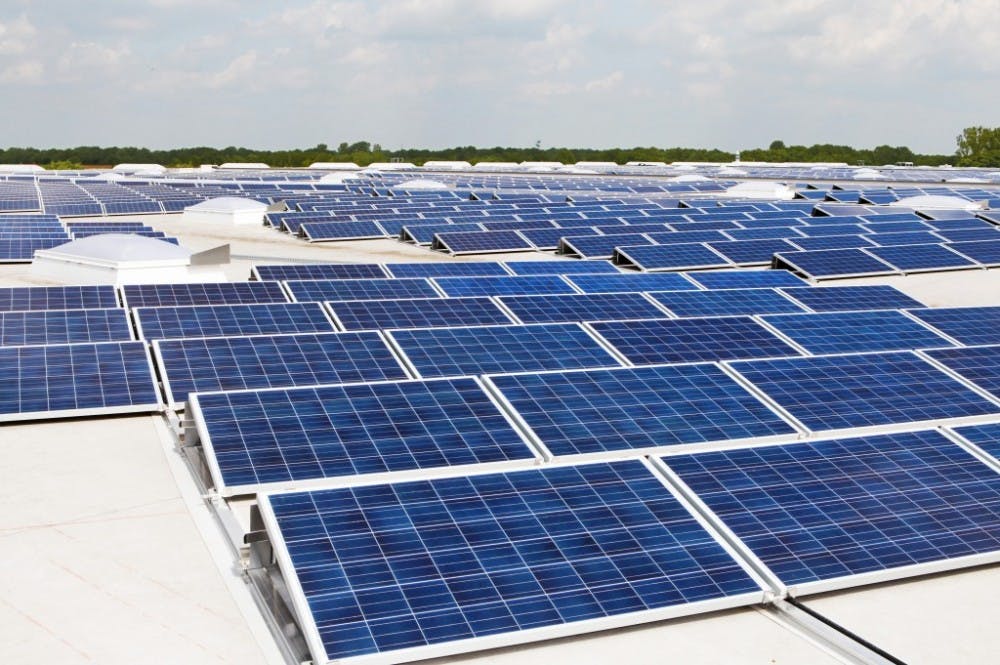On Nov. 30, the Conference of the Parties (COP), consisting of over 190 countries, met in Paris to reduce the effects of climate change. By Dec. 12, this meeting had resulted in an agreement to hold the increase in global average temperature to two degrees Celsius above pre-industrial levels. For the United States, this involved a pledge to reduce greenhouse gas emissions by 28 percent below 2005 levels.
This can seem like a steep goal, especially given the rise in fracking among oil and natural gas companies. But according to a study done by the University of Colorado Boulder and the National Oceanic and Atmospheric Administration (NOAA), the U.S. is poised to not only meet this goal, but to surpass it by up to 50 percent.
By using a sophisticated mathematical model, which takes into account generation and transmission scenarios as well as increases in future cost and demand, NOAA’s Earth System Research Laboratory (ESRL) in Boulder, Colo. shows that improvements in transmission infrastructure could allow weather-driven renewable resources to supply most of the nation’s electricity.
NOAA discussed the results of this model in a paper co-authored with recently retired ESRL director Alexander E. MacDonald. In the paper, which was published in the Nature Climate Change Journal, MacDonald theorizes that since the sun is always shining or winds are always blowing somewhere in the U.S., matching renewable energy generation systems to the scale of weather systems could solve the energy generation crisis. In essence, expanding renewable energy sources across the U.S., even without increasing battery storage, would generate enough electricity to keep our nation running.
MacDonald, along with a team of four other NOAA scientists, analyzed recent meteorological data and created a model to evaluate the cost of integrating mixed sources of electricity into the U.S.’s national energy system.
Their model first estimates renewable resource potential, and then analyzes nation-wide energy demands. The model then correlates these estimates with each potential method’s associated carbon dioxide emissions and estimates how much it would cost to expand and operate electricity generation to meet future needs. The result is a multifaceted analysis of different electricity generation methods and their environmental and economic costs.
When MacDonald and his team ran their model, they found that it is possible to provide low-cost and low-emissions energy. According to Christopher Clack, one of the researchers who created the ESRL model, their system seeks out the lowest-cost energy sources and the model installs more renewable energy on the grid than exists today, regardless of constraints. Even in a scenario where renewable energy is more expensive than predicted, their model shows that energy would cost only 8.6 cents per kilowatt-hour (kWh) with a greater number of renewable resources producing electricity, compared to the current cost of 9.4 cents per kWh.
With this added renewable energy, carbon dioxide emissions would be cut by 33 percent below 1990 levels by 2030. Also, if renewable energy becomes cheaper than natural gas, as is expected, ESRL’s model predicts that carbon dioxide emissions would be reduced by 78 percent from 1990 levels and electricity would cost 10 cents per kWh.
The key to the ESRL model’s calculations is the allowance of improvements of the current transmission infrastructure. MacDonald states that the researchers allowed the model to build and pay for new high-voltage direct-current transmission grids (HVDC) to supplement the current electrical grid. These grids reduce electricity losses during long-distance transmission.
Their paper concluded that these grids are essential in keeping electricity costs low. MacDonald links HVDC grids to efficient interstate highway systems. Just as an interstate allows for traffic to smoothly flow between cities, reducing the cost of travel, HVDC grids allow for electrons to smoothly travel from city to city with minimal electricity loss.
Mark Jacobson, director of Stanford University’s Atmosphere and Energy Program, regards ESRL’s study as innovative. Because it shows renewable energy and transmission updates, it can significantly reduce fossil fuel-based electricity while simultaneously meeting the power demands of the U.S.





